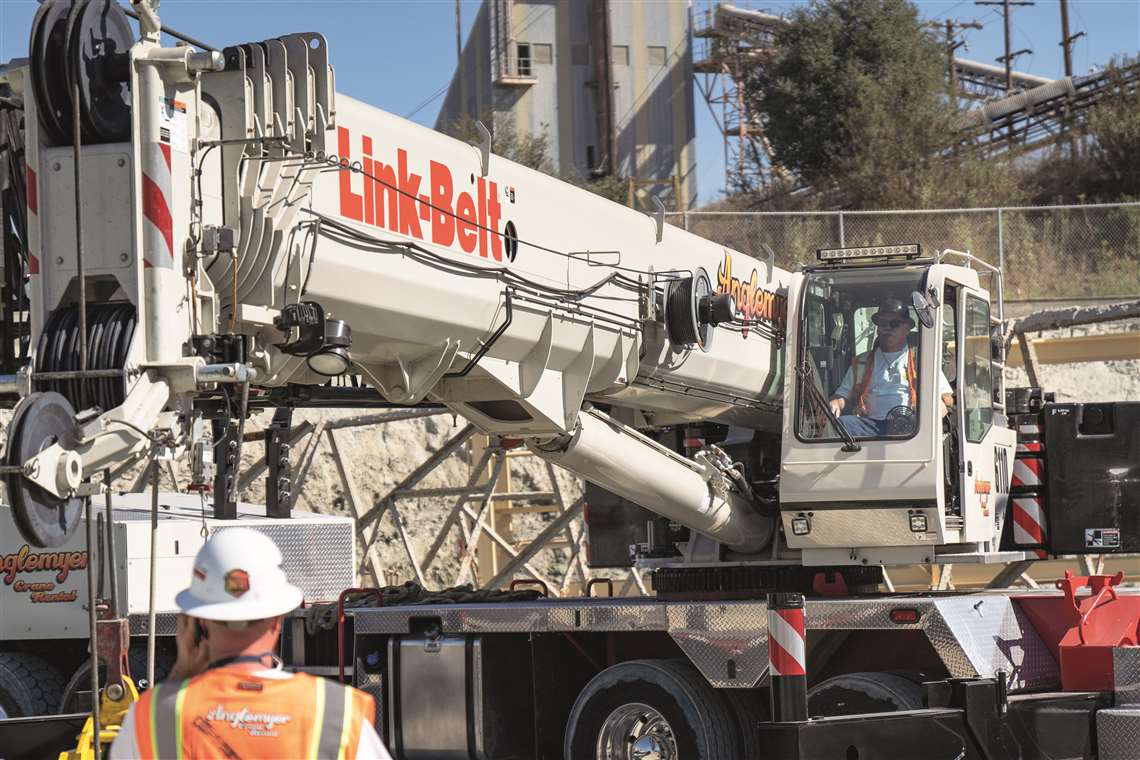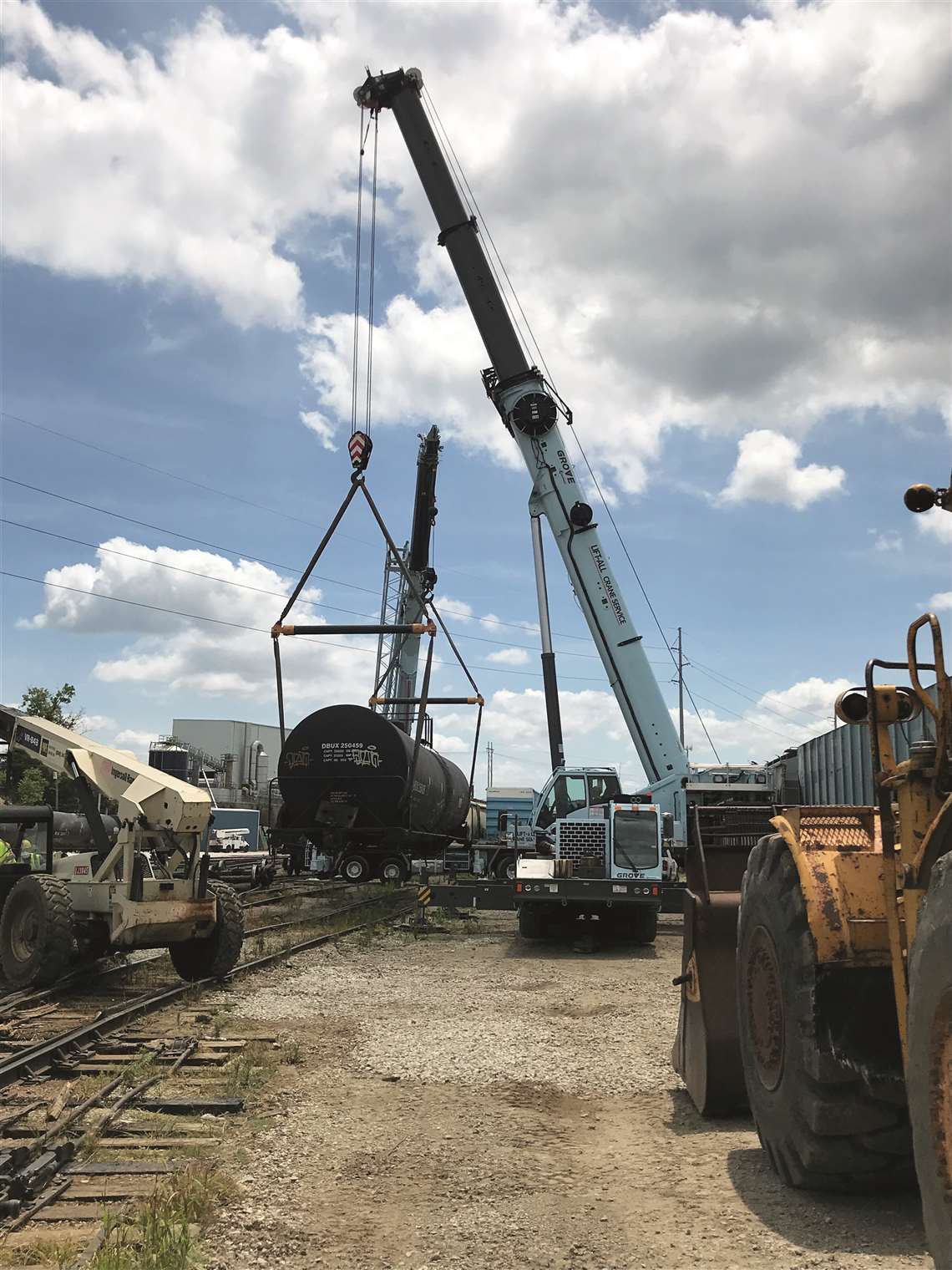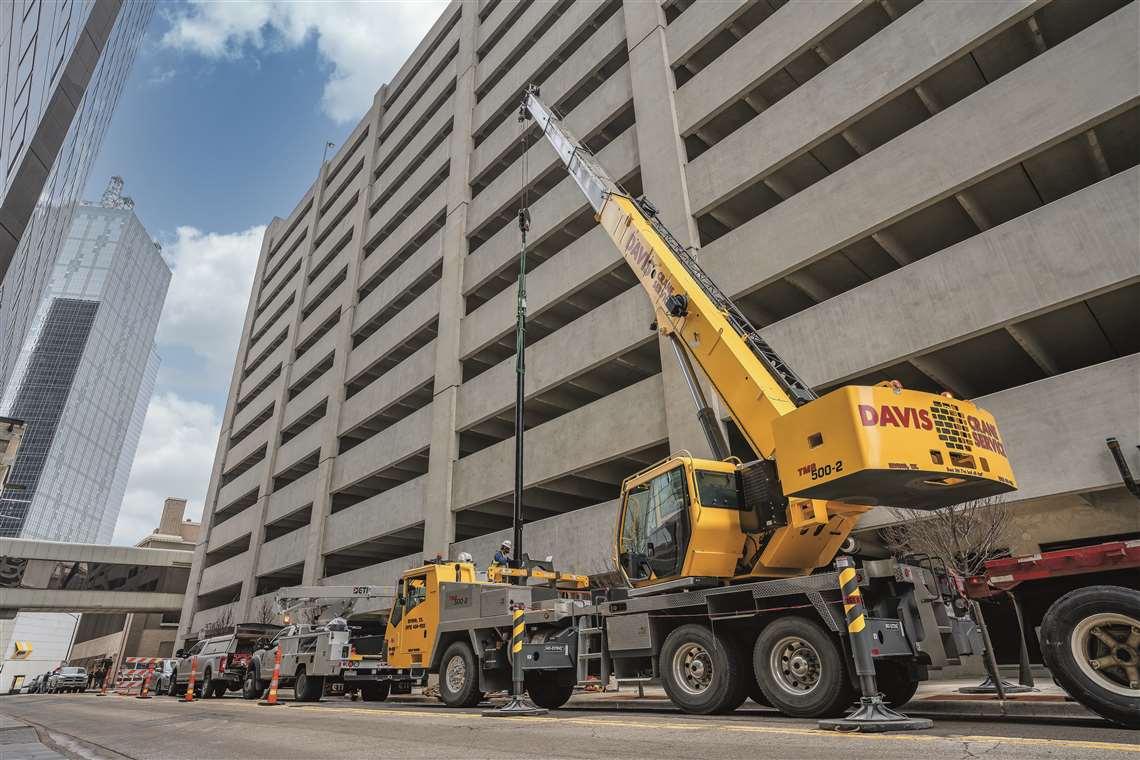Truck crane market sees recovery
25 May 2021
Truck crane demand is rising as OEMs find ways to meet evolving standards.
A tried-and-true industry favorite through the years, truck cranes are known for their reliability and cost effectiveness as a taxi crane. As the market begins to see a recovery after the global pandemic, new construction serves as a major factor when it comes to driving truck crane demand and usage.
Evolving standards
But despite a market recovery, when it comes to the older truck crane standards, do they still fit in the industry today? This question can be answered both yes and no.
 Anglemyer Crane Rental used its its 110-ton Link-Belt HTC-86110 hydraulic truck crane and 275-ton Link-Belt ATC-3275 all-terrain crane to perform the tandem lift of a bridge.
Anglemyer Crane Rental used its its 110-ton Link-Belt HTC-86110 hydraulic truck crane and 275-ton Link-Belt ATC-3275 all-terrain crane to perform the tandem lift of a bridge.
“As the roading laws continue to be strict in some areas, some of the truck cranes of yesterday can be difficult to transport from job to job,” said JJ Grace, product manager for telecrawler and truck cranes, Manitowoc. “Therefore, today’s truck cranes need to be lighter. Also, our customers are always asking for more boom length. Last but not least, the emission standards are always evolving. For example, today’s truck cranes are required to use diesel exhaust fluid (DEF). Manitowoc is fortunate to have a great team of engineers that help us migrate through all of these evolving changes and to continue to be the leaders in the truck crane market.”
On the other end of the spectrum, Wes Dowd, director of operations and equipment at Davis Crane Service, stated that the truck crane standards are still alive and well.
“We have 63 truck cranes in our fleet of 150 total cranes, and our customers would rather a see a truck crane instead of a boom truck for their heavier hoisting needs,” said Dowd. “I believe the truck crane market has evolved such that some of the truck crane manufacturers discontinued the smaller models, but as many of us conversed with Grove, we are pleased that they reintroduced the 40-ton truck crane, and we ended up with 10 of them.”
 Lift-All Crane Service, an Omaha, NE-based Grove customer, recently added two new Grove truck cranes to its fleet, filling a 100-ton gap with the TMS9000-2.
Lift-All Crane Service, an Omaha, NE-based Grove customer, recently added two new Grove truck cranes to its fleet, filling a 100-ton gap with the TMS9000-2.
Looking ahead to the future of truck crane product lines, Dowd would like to like to see the 40 through 110-ton truck cranes continue to be offered, as above the 110-ton range the all-terrains tend to be a preferred option.
Hot button topic
Manitowoc’s Grace concluded that he hopes in the future, some of the daily permits that customers are required to get will transition to becoming yearly permits.
“I believe it would help all parties involved, crane rental companies and state governments,” added Grace. “With the current administration in Washington, electric cranes seem to be a hot topic from time to time. I could see that as a possibility down the line with the evolving emission standards.”
Lift-All Crane Service, an Omaha, NE-based Grove customer, recently added two new Grove truck cranes to its fleet, filling a 100-ton gap with the TMS9000-2.
“One of the great things about the crane is that it has the ability to wear a lot of hats. If we have a heavier pick, we can add extra counterweight later, meaning that’s an extra 12,000 pounds the crane doesn’t have to carry on the road,” Hylok explained. “We can just take the crane along with one small support truck for the extra counterweight; it’s the perfect little package.”
Link-Belt Cranes is also seeing continued demand for their truck crane products as the market overcomes the ramifications of Covid-19, and as construction projects gain velocity again.
Particularly, rental units saw a strong surge despite the virus, according to Robert Greene of Link-Belt Mid-Atlantic. Infrastructure projects will continute to drive the market, and customers are seeking the latest in cutting-edge machinery offering greater capacity and radius, he said.
 Davis Crane Service utilizes truck cranes in its fleet for maintenance projects such as HVAC changeouts, infrastructure and power transmission projects.
Davis Crane Service utilizes truck cranes in its fleet for maintenance projects such as HVAC changeouts, infrastructure and power transmission projects.
“They definitely want more,” said Greene. “A lot of it is being driven by the safety percentages you have to build into these jobs. So you need a bigger crane to hit some of those parameters.”
A team player
Truck cranes are also an efficent and cost-effective alternative in tandem with all-terrains. Anglemyer Crane Rental of Azusa, CA recently utilized its 110-ton Link-Belt HTC-86110 hydraulic truck crane and 275-ton Link-Belt ATC-3275 all-terrain crane to perform a tandem lift of a 155-foot long, 60,000-pound refurbished water bridge used to circulate water in a sediment pond for the industrial production of sand. The HTC-86110 was equipped with full counterweight to handle its end of the 60,000-pound bridge.
“It was a little bit of a unique setup,” said Mike Norris, crane operator. “A temporary ramp was built for us to get the HTC-86110 down into the pond. Then we were set up along with the ATC-3275 so we could pick the bridge and set it into place. Reach for both cranes was important for positioning the bridge.”
STAY CONNECTED


Receive the information you need when you need it through our world-leading magazines, newsletters and daily briefings.




